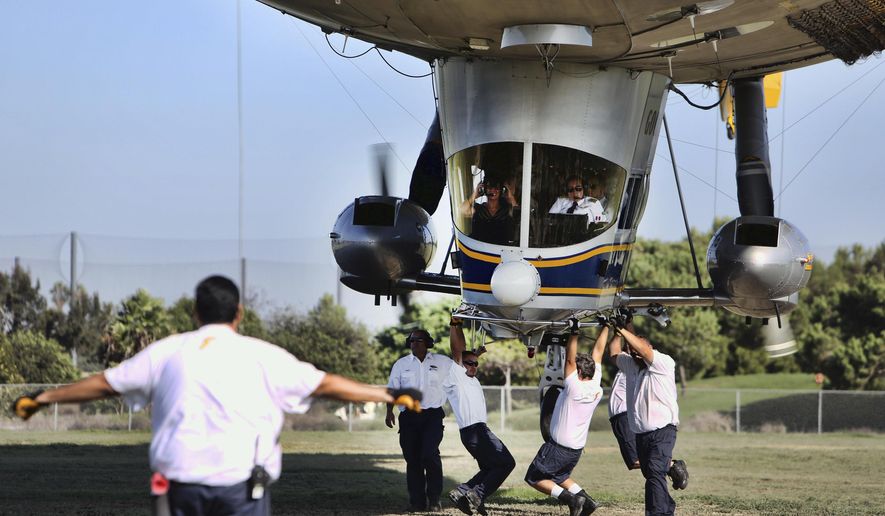Miami Beach Police recently skirted a Florida ban on police drone surveillance by monitoring a crowd with a small, helium-filled blimp — or what reconnaissance experts call a “tethered aerostat.”
Aerostats and their imaging technology have assisted U.S. troops on the battlefields of Iraq and Afghanistan, and now they have found their way back to America.
Industry insiders hope the latest iteration of blimps, or airships, will soon play a larger role in modern aeronautics despite past failures.
“There have been many false dawns for the return of airships,” said Simon Whalley, external affairs director at the Royal Aeronautical Society, in an email. “But the application of new, tough and lightweight materials and propulsion technologies could usher in a new generation of lighter-than-air concepts.”
Experts say that airships have had an image problem since the 1937 Hindenburg disaster, in which 36 people were killed when the zeppelin’s hydrogen tanks exploded over New Jersey.
Airship pioneer Gregory Gottlieb said economic issues also have been a factor, pointing out that the vessels have received less investment and attention than airplanes.
“Planes have always been faster and made a lot more noise, which a lot of military people like,” said Mr. Gottlieb, who served 20 years in the British army and headed the Ministry of Defense’s counterterrorism aviation unit.
He categorized airships as “undervalued technology” that offers governments, militaries and businesses key opportunities, from counter-narcotics policing to surveying minerals to border protection.
“The issue is getting past the giggle factor,” he said, noting that many still look down on airships as mere balloons.
Meanwhile, U.S. Customs and Border Protection officials recently admitted that five airships are flying above the Rio Grande Valley in the southernmost tip of South Texas to provide border security.
Past efforts to revive the airship industry, like Germany’s Cargolifter project, have ended in failure. The now-defunct Cargolifter company was heralded in 1996 as the future in transporting massive loads. It folded in 2002 — leaving behind the world’s largest hangar, which now serves as an amusement park.
Chris Caplice, executive director of the Center for Transportation and Logistics at MIT, says the market for airships will remain niche and “narrow.”
But research and development is booming, led by U.S. aerospace giant Lockheed Martin’s work for the military and oil-and-gas industries. British and Russian efforts also are underway to build 500-foot-long “flying whales” that are roughly twice the size of a Boeing 747.
“The aerospace community should not these developments as threats but and opportunities,” said Mr. Gottlieb, who directs the firm Airships Arabia, which aims to spread aerostats across the Persian Gulf and the Middle East.
“For the transportation of goods and equipment, airships would be cheaper than aircraft and faster than shipping, and producing fewer emissions than both, so there could be a new market for their use,” Mr. Whaley said.
Recent years have seen the Pentagon invest more in airships, especially the missile-defense vessel called the JLENS, which contained radar powerful enough to scan more than 300 miles.
In October 2015, however, a JLENS made world headlines when it became untethered during a test along the East Coast and drifted from Maryland to Pennsylvania before technicians brought it back under control.
• Dan Boylan can be reached at dboylan@washingtontimes.com.




Please read our comment policy before commenting.